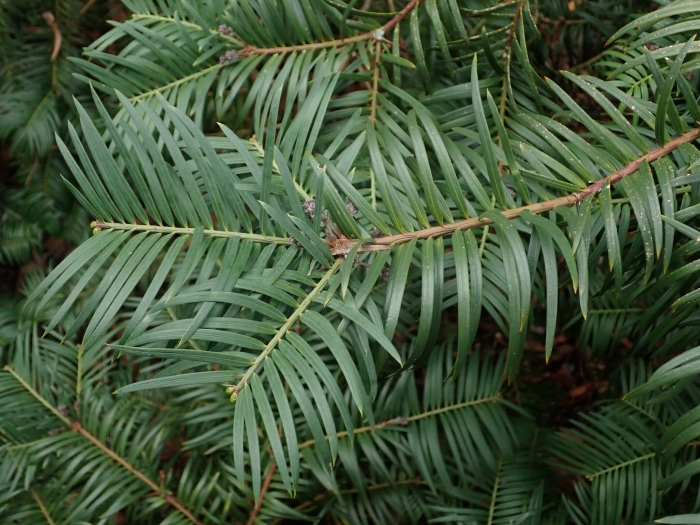Chinese Plum-Yew
(Cephalotaxus fortunei)
Chinese Plum-Yew (Cephalotaxus fortunei)
/
/

© Daniel Cahen
CC BY 4.0
Image By:
© Daniel Cahen
Recorded By:
Copyright:
CC BY 4.0
Copyright Notice:
Photo by: © Daniel Cahen | License Type: CC BY 4.0 | License URL: http://creativecommons.org/licenses/by/4.0/ | Uploader: danielcahen | Publisher: iNaturalist |












Estimated Native Range
Summary
Cephalotaxus fortunei, commonly known as Chinese plum-yew, is an evergreen shrub or small tree native to forest understories, shaded valleys, and stream banks in central and eastern China, as well as northern Myanmar. It typically grows up to 20 feet (6 meters) tall, but can occasionally reach heights of 66 feet (20 meters) in its natural habitat. The trunk diameter is usually around 8 inches (20 cm), supporting an open and loosely rounded crown. The bark is reddish-brown, characterized by rough square scales and long shreds that peel off over time. The foliage consists of long, dark green, leathery but soft leaves that are the longest in the genus, providing a unique texture in garden settings.
Chinese plum-yew is valued for its shade tolerance and ornamental qualities, including its attractive foliage and the purple coloration of its seed cones when ripe. It is often used in shaded garden areas, as a specimen plant, or for hedges in urban and residential landscapes. The plant prefers moist, well-drained soils and can thrive in part shade to full shade conditions. While it is relatively low-maintenance, it may require protection from strong winds and heavy snowfall. It is not known to have significant disease or pest issues, but it can suffer from root rot if planted in poorly drained soils.CC BY-SA 4.0
Chinese plum-yew is valued for its shade tolerance and ornamental qualities, including its attractive foliage and the purple coloration of its seed cones when ripe. It is often used in shaded garden areas, as a specimen plant, or for hedges in urban and residential landscapes. The plant prefers moist, well-drained soils and can thrive in part shade to full shade conditions. While it is relatively low-maintenance, it may require protection from strong winds and heavy snowfall. It is not known to have significant disease or pest issues, but it can suffer from root rot if planted in poorly drained soils.CC BY-SA 4.0
Plant Description
- Plant Type: Shrub, Tree
- Height: 10-20 feet
- Width: 10-20 feet
- Growth Rate: Slow
- Flower Color: N/A
- Flowering Season: Non-Flowering
- Leaf Retention: Evergreen
Growth Requirements
- Sun: Part Shade, Full Shade
- Water: Medium
- Drainage: Medium
Common Uses
Border Plant, Hedges, Low Maintenance
Natural Habitat
Forest understories, shaded valleys, and stream banks in central and eastern China, and northern Myanmar
Other Names
Common Names: Chinese Cowtail Pine, Fortune’s Yew, Fortune’s Plum Yew, Kineska Patisa, San Jian Shan, Fortune’s Yew Plum
Scientific Names: , Cephalotaxus fortunei, Cephalotaxus fortunei var. pendula, Cephalotaxus kaempferi, Cephalotaxus robusta, Taxus fortunei,
GBIF Accepted Name: